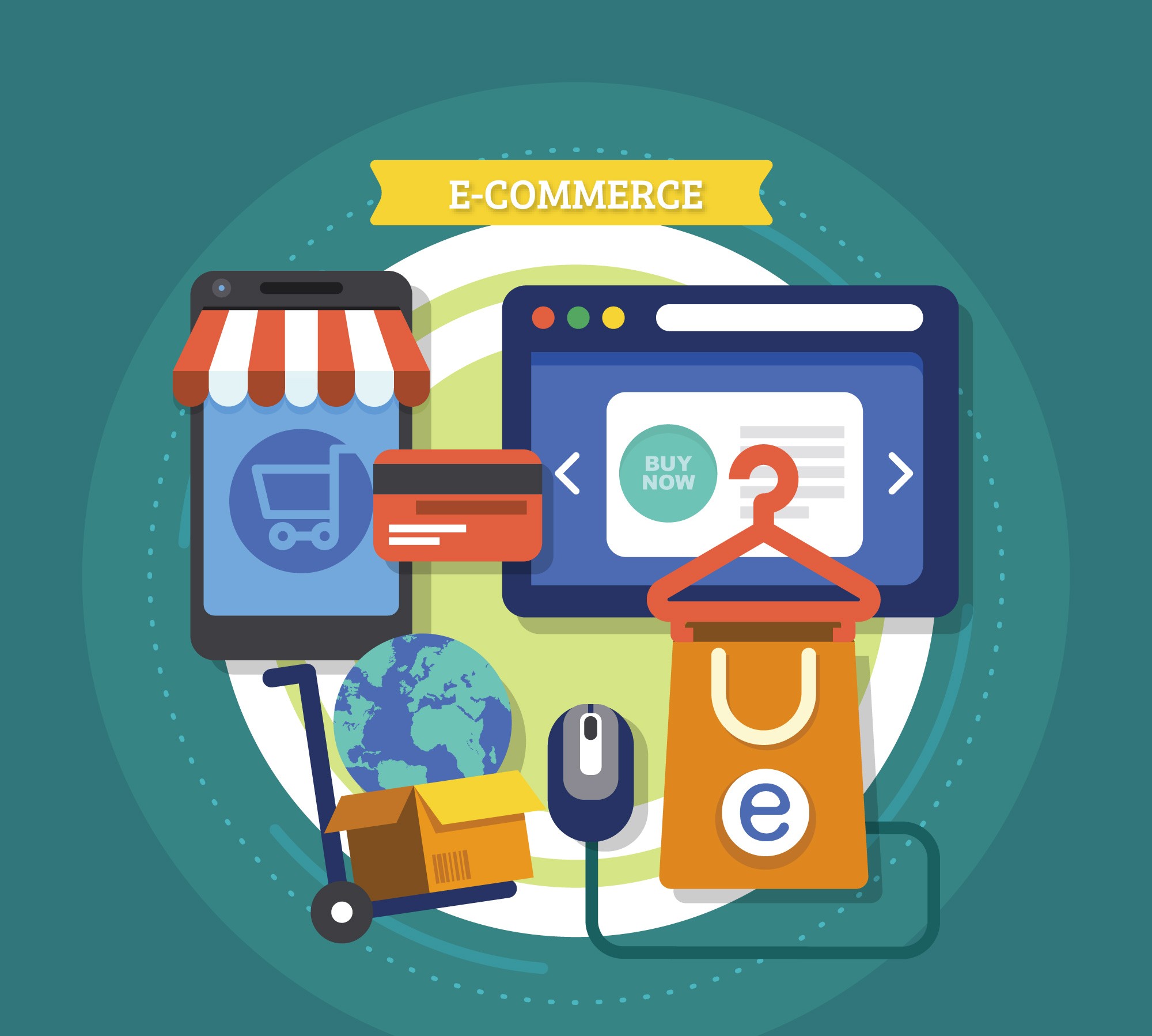
Key Takeaways
- Headless e-commerce separates the front end from the back end, offering greater flexibility for omnichannel experiences, but it often retains a monolithic backend.
- Composable commerce furthers flexibility by modularizing the backend, allowing businesses to select and integrate best-of-breed solutions for different commerce functions.
- Headless commerce is ideal for businesses looking to enhance frontend experiences without significant backend changes, while composable commerce is best for those seeking complete control and scalability.
- Composable commerce reduces vendor lock-in, improves customization, and enables rapid innovation, but its implementation is more complex.
- Businesses should choose headless e-commerce for faster deployment, frontend agility, and composable commerce for long-term scalability and adaptability.
E-commerce isn’t what it used to be. The days of rigid, one-size-fits-all platforms are fading fast, replaced by modern architectures that offer agility, flexibility, and personalization at scale.
Enter composable commerce and headless e-commerce—two cutting-edge approaches reshaping how businesses build and manage online stores.
But what’s the difference between composable commerce and headless e-commerce?
Are they just two names for the same thing, or does each offer distinct advantages?
If you’re a business looking to scale, optimize, or future-proof your e-commerce strategy, choosing between headless commerce and composable commerce can define your success.
In this guide, we’ll explain composable commerce vs headless ecommerce: it’s advantages and many more. Moreover it helps you determine which approach best meets your business needs.
Let’s dive in.
What is headless ecommerce?
Headless ecommerce refers to an architecture where the frontend presentation layer is decoupled from the backend commerce functionalities.
This separation allows businesses to manage and deliver content across various channels—such as websites, mobile apps, and IoT devices—without altering the backend infrastructure.
Communication between the frontend and backend is facilitated through APIs, enabling developers to create tailored user experiences independent of backend constraints.
Key characteristics of headless ecommerce:
- Decoupled architecture: Separates the frontend from the backend, allowing independent development and deployment.
- API-driven communication: Utilizes APIs to connect and facilitate interactions between the frontend and backend systems.
- Omnichannel delivery: Enables consistent and seamless customer experiences across multiple platforms and devices.
- Enhanced flexibility: Empowers businesses to implement customized user interfaces and experiences without backend limitations.
Advantages of headless ecommerce
Implementing a headless ecommerce architecture provides:
- Enhanced frontend flexibility: Empowers developers to create unique user interfaces without backend constraints.
- Omnichannel delivery: Enables consistent customer experiences across various platforms and devices.
- Improved performance: Allows for optimized frontend performance, leading to better user engagement.
- Simplified updates: Facilitates easier updates to the frontend without impacting backend operations.
- Faster time-to-market: Accelerates the deployment of new frontend features and designs.
Disadvantages of headless ecommerce
- Backend rigidity: While frontend customization is easier, backend changes often require significant development efforts.
- Higher development costs: Requires skilled developers to manage APIs and integrations.
- Complex maintenance: Frequent updates to APIs and microservices can create technical overhead.
- Potential performance issues: API-heavy communication can lead to latency if not optimized properly.
What is composable commerce?
Composable commerce builds upon the principles of headless architecture by further modularizing the ecommerce ecosystem.
It involves assembling a customized tech stack using best-of-breed components, each responsible for a specific business capability.
This approach allows businesses to select and integrate various services—such as product information management, search, payment processing, and customer relationship management—tailoring the system to their unique requirements.
Core principles of composable commerce:
- Modularity: Breaks down the commerce stack into independent, interchangeable components.
- Flexibility: Enables businesses to choose and integrate preferred services or vendors for each function.
- Scalability: Allows for the addition or replacement of components without disrupting the entire system.
- Best-of-breed approach: Encourages the selection of top-tier solutions for each business capability, ensuring optimal performance and innovation.
Advantages of composable commerce
Adopting a composable commerce approach offers several benefits:
- Best-of-breed solutions: Allows businesses to integrate leading services and technologies for each function, ensuring optimal performance.
- Rapid innovation: Facilitates quick implementation of new features or services by swapping or adding components as needed.
- Reduced vendor lock-in: Minimizes dependence on a single vendor, providing the flexibility to change components without affecting the entire system.
- Enhanced scalability: Enables businesses to scale individual components independently, improving efficiency and responsiveness.
- Tailored customer experiences: Empowers businesses to create personalized and engaging user experiences by selecting components that align with their specific needs.
Disadvantages of composable commerce
- High implementation complexity: Requires significant technical expertise to integrate multiple services effectively.
- Increased costs: Initial setup costs are higher due to multiple integrations and vendor dependencies.
- Longer time-to-market: Developing a modular solution takes more time compared to a traditional monolithic setup.
- Ongoing maintenance challenges: Managing multiple vendors and services can become cumbersome.
Headless vs composable commerce: How they are different?
While both composable commerce and headless ecommerce aim to enhance flexibility and adaptability, they differ in scope and implementation.
Architectural approach:
- Headless ecommerce: Focuses on decoupling the frontend from the backend, providing freedom in frontend development while maintaining a monolithic backend structure.
- Composable commerce: Extends decoupling to the backend by modularizing services into discrete components, allowing for a more granular and customizable architecture.
Flexibility and customization:
- Headless ecommerce: Offers flexibility in delivering content across various channels but may be limited by the capabilities of the monolithic backend.
- Composable commerce: Provides greater customization by enabling businesses to select best-of-breed solutions for each component, facilitating tailored user experiences.
Implementation complexity:
- Headless ecommerce: Simpler to implement for businesses looking to enhance frontend experiences without overhauling the backend.
- Composable commerce: More complex due to the integration of multiple services but offers superior adaptability and scalability.
Scalability:
- Headless ecommerce: Scaling may require adjustments to the monolithic backend, potentially leading to increased complexity.
- Composable commerce: Allows for independent scaling of individual components, enhancing efficiency and responsiveness to market demands.
Vendor dependency:
- Headless ecommerce: Often relies on a single vendor for backend functionalities, which may limit flexibility.
- Composable commerce: Reduces vendor lock-in by allowing businesses to integrate services from multiple providers, fostering innovation and adaptability.
Comparison between composable commerce vs headless commerce
While headless commerce vs composable commerce both offer flexibility, they serve different purposes.
Headless ecommerce primarily focuses on separating the frontend from the backend, while composable commerce takes a modular approach to the backend itself.
Here’s a side-by-side comparison to help clarify the differences:
| Feature | Headless ecommerce | Composable commerce |
| Architecture | Decouples frontend from backend | Decouples both frontend and backend into modular services |
| Backend structure | Usually monolithic | Fully modular, built from interchangeable components |
| Customization | Custom frontend experiences but limited backend flexibility | Full backend and frontend customization with best-of-breed components |
| Flexibility | Limited to frontend changes | Allows flexibility at every level of the commerce stack |
| Implementation complexity | Easier to implement than composable commerce | More complex due to multiple integrations |
| Time to market | Faster than composable commerce since the backend remains intact | Takes longer due to custom integrations and modular setup |
| Ideal for | Businesses wanting a modern frontend while keeping their backend intact | Businesses needing a fully customizable and scalable commerce system |
Choosing the right approach for your business
The decision between composable commerce and headless ecommerce depends on various factors:
- Business objectives: Consider whether your focus is on frontend innovation or comprehensive system flexibility.
- Technical resources: Assess your team’s capability to manage complex integrations inherent in a composable approach.
- Scalability needs: Determine if your business requires the ability to scale specific components independently.
- Budget constraints: Evaluate the financial implications of implementing and maintaining each architecture.
- Time-to-market: Consider the urgency of deploying new features and the impact on your competitive positioning.
Headless e-commerce is a strong choice for businesses seeking greater frontend flexibility and omnichannel experiences. It allows brands to create engaging digital experiences while keeping their backend intact.
However, composable commerce provides unparalleled adaptability for companies aiming for a fully customizable and scalable e-commerce system.
The choice between composable and headless commerce depends on your business model, growth strategy, and technical capabilities.
Here’s a final decision framework to help:
When to choose headless ecommerce:
- You want frontend flexibility but prefer to keep your backend intact.
- You need fast time-to-market for new customer experiences.
- Your focus is on omnichannel experiences without rebuilding backend infrastructure.
- You want to improve site performance and responsiveness.
When to choose composable commerce:
- You want full control over your commerce stack, including backend and frontend.
- You need best-of-breed components for enhanced performance and scalability.
- Your business has complex workflows that require tailored solutions.
- You aim to future-proof your ecommerce platform with ongoing innovation.
Final thoughts
Both headless ecommerce and composable commerce represent the next phase in ecommerce evolution, offering businesses flexibility, scalability, and enhanced customer experiences.
While headless commerce provides a modern frontend architecture, composable commerce delivers a modular, customizable tech stack that can evolve with market demands.
If your business is looking for a quick way to upgrade frontend experiences, headless ecommerce is a great starting point.
However, if you want to build a truly adaptive and future-ready ecommerce system, composable commerce is the ultimate approach.
By understanding the key differences between composable vs headless commerce, businesses can make informed decisions to stay competitive, scale efficiently, and deliver exceptional digital experiences.
The right choice depends on your growth ambitions, technical expertise, and the level of control you need over your commerce stack.
Frequently asked questions
1. What is the main difference between composable commerce and headless ecommerce?
Headless ecommerce separates the frontend (user experience) from the backend (commerce operations), allowing for better flexibility in UI design and omnichannel experiences.
Composable commerce, on the other hand, modularizes the backend into separate, best-of-breed components, giving businesses complete control over their tech stack and enabling greater scalability.
2. Is composable commerce the same as headless ecommerce?
No. While both approaches focus on flexibility, headless ecommerce primarily decouples the frontend from the backend, whereas composable commerce takes modularity further by allowing businesses to integrate and swap various backend components independently.
3. Which is better: headless commerce or composable commerce?
The choice depends on your business needs:
- Headless ecommerce is ideal if you want greater frontend flexibility and faster time-to-market without disrupting your existing backend.
- Composable commerce is better if you need full customization, scalability, and best-of-breed solutions for different ecommerce functions.
4. Is composable commerce more expensive to implement than headless ecommerce?
Yes, composable commerce can be more expensive initially because it involves integrating multiple services and tools instead of relying on a single vendor. However, it reduces vendor lock-in and provides long-term cost efficiency by allowing businesses to swap out components as needed.
5. Do I need a development team for headless or composable commerce?
Yes. Both headless commerce and composable commerce require technical expertise. Headless ecommerce involves API-driven integrations, while composable commerce demands even more development effort to integrate various best-of-breed components seamlessly.
